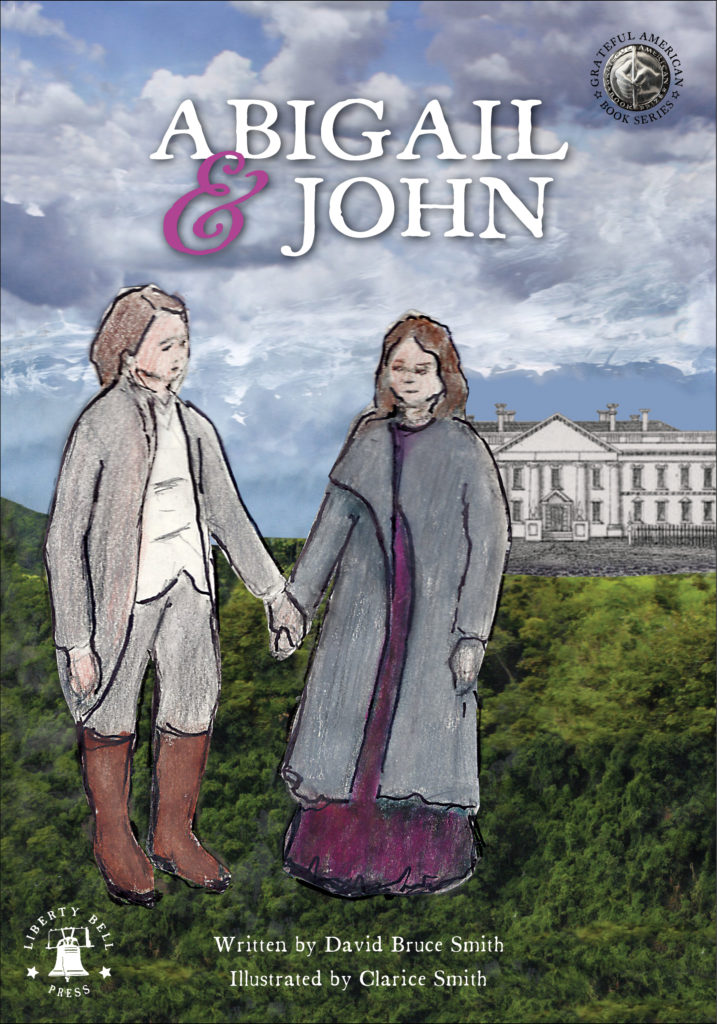In 2014, author David Bruce Smith established The Grateful American Foundation to restore enthusiasm about American history for children, as well as adults, via videos and podcasts. The multimedia offerings have grown to include a book series, which includes the inaugural title Abigail & John, a look into the life and partnership of one of the country’s foundational couples. In the centennial year of women’s suffrage, the book shines a spotlight on the life and influence of Abigail Adams.
In an interview with NMWA, Smith discussed the genesis of the book and his creative partnership with his mother, renowned painter Clarice Smith, who created the book’s illustrations.
1. Why did you want to tell the story of Abigail and John Adams?
I wanted to write a series of books about presidential and historical couples whose marriages were partnerships. Many women have been diminished through the decades, despite their durable contributions to American history. Abigail Adams, recognized as one of the most educated First Ladies, was also her husband’s politically savvy partner; without her, John Adams would, probably, never have ascended to the White House.
In 1776, while John Adams was in Philadelphia helping to draft the Declaration of Independence, he received a letter from Abigail advising him “to remember the ladies.” Adams considered his wife’s words; it wasn’t the right time to act, but the fact that he reflected on, and respected, her request, proves their marriage was warm, loving, and equal.
A re-examination of Abigail’s life is timely. One hundred years ago, the 19th amendment to the Constitution was ratified, and women got the right to vote. No doubt, the country is now more enlightened—partially because of her.
2. Why did you choose to work in the children’s book genre?
Actually, I didn’t choose it, the genre “found” me. In 2009, I went to a history conference in Richmond and met the executive director of the John Marshall Foundation. I was offered a commission to write a children’s book about Marshall, with the intent of raising his profile among young people. I told them I had never written for a young audience, but they had read some of my books and were convinced I was qualified, despite my misgivings. I agreed to the project only if my mother consented to be the illustrator. American Hero: John Marshall, Chief Justice of the United States, was published in 2013, with my favorite collaborator.
3. Can you describe your collaborative process with your mother?
My mother and I have been working together for so many years that it’s no longer a “process.” While I am in the midst of the early drafts, she makes preliminary sketches of the cover and some of the events which have to be included in the story. As my drafts near the finishing point, she fills in with the remaining illustrations, knowing that a book designed for young children requires a picture to accompany almost every idea. When we’re finished, the art and the story pages are laid out to make sure all of the pieces are understandable, cohesive, at the proper grade level. Then, to the editor.
4. What do you hope young readers will take from this story?
The Adamses lived many stories, which intertwined: for example, Abigail raising the children alone on a farm, while John ascended in politics; their individual sacrifices to help create a democracy; surviving the death of their daughter, Susanna; Abigail, choosing to inoculate herself and the children with a smallpox vaccine that could have killed all of them; John and Abigail pushing and preparing their son, John Quincy, for an un-requested life in politics, and the presidency.
Usually, a children’s book biography is idealistic, with the following trajectory: subject is born; excels in school; succeeds in his/her career quickly; becomes famous; dies a hero. My mother and I wanted to construct Abigail & John differently, so that a young person would learn that everyone, famous or not, has difficulties in life. I think we succeeded, because we explained hardships with age-appropriate language.
Abigail & John is available for purchase in NMWA’s Museum Shop.
Want to learn more? Listen to an interview between Louise Mirrer, president & CEO of the New-York Historical Society, and David Bruce Smith.

